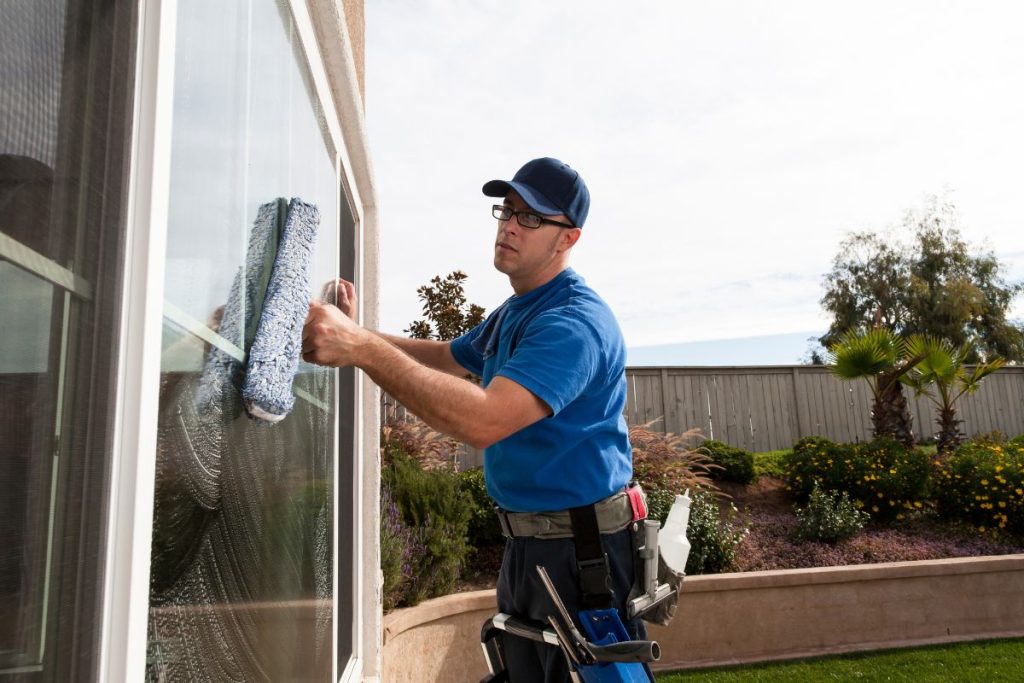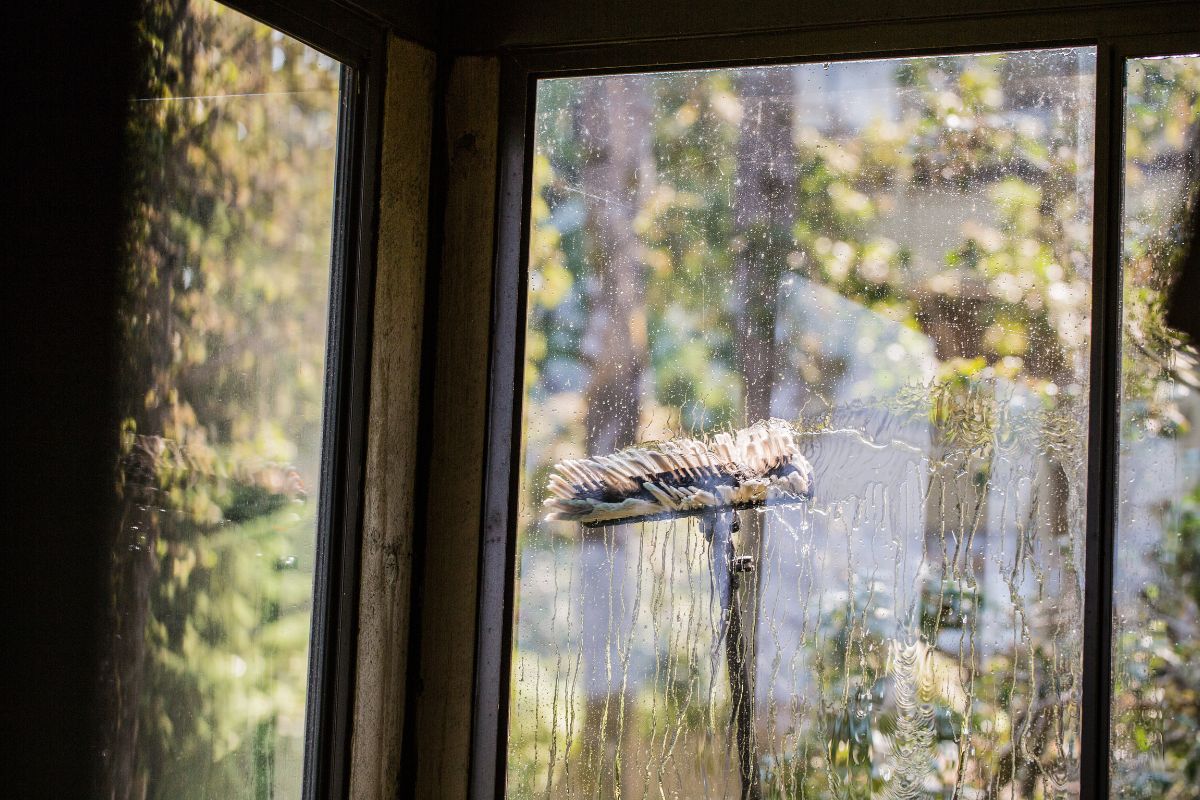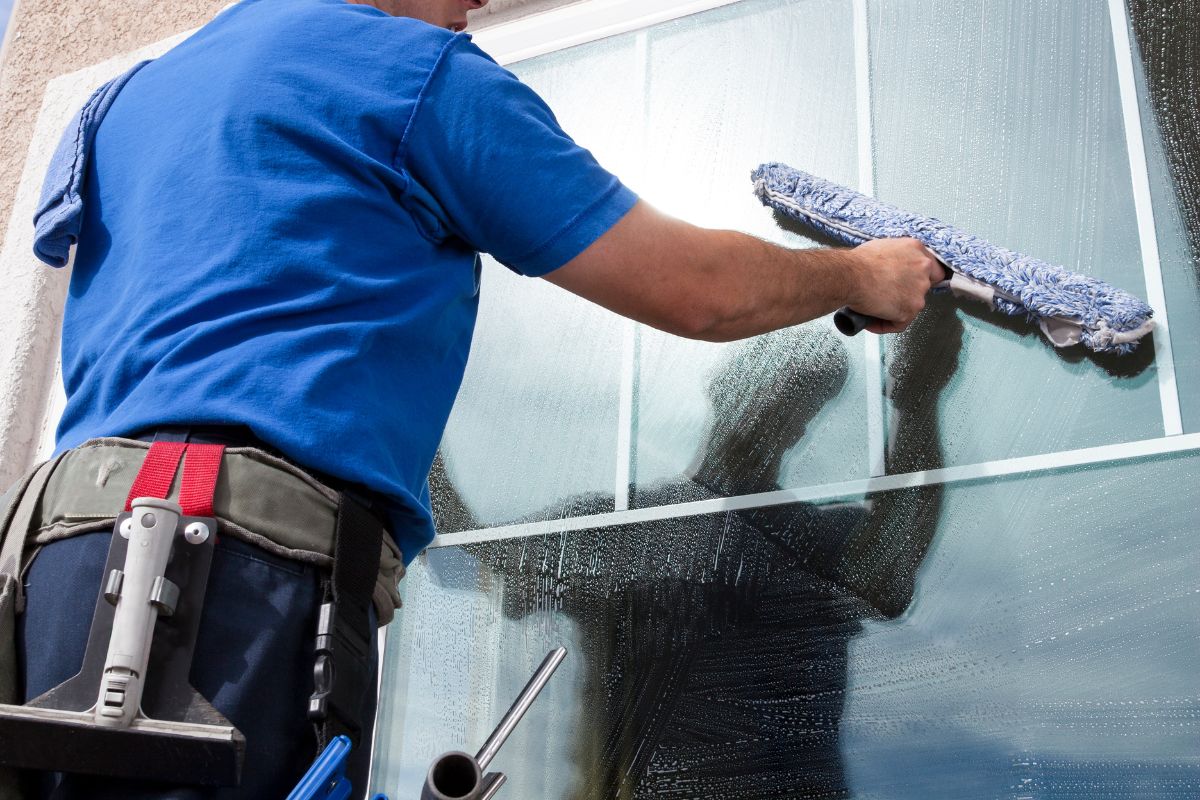
It’s amazing how much clearer the world looks through clean windows! If your exterior windows haven’t been cleaned in years, you’re likely dealing with a buildup of dirt, grime, pollen, and even mold. The good news is, with the right tools, techniques, and a bit of elbow grease, you can restore them to their former glory. This guide will walk you through a step-by-step process, ensuring a safe and effective cleaning experience, even for the most neglected windows.
The Challenge of Neglected Windows
Over time, windows accumulate a surprising amount of dirt and debris. This buildup not only diminishes your view but can also etch into the glass, making it even harder to clean in the future. Neglecting exterior windows can also contribute to the deterioration of window frames and seals. From pollen clinging to the glass to the effects of acid rain, neglecting windows has a real effect on the value of your home.
Preparation is Key

Before you start spraying and scrubbing, it’s essential to gather the right supplies and take the necessary safety precautions.
Gathering Your Supplies
Here’s a list of what you’ll need:
- Window Cleaning Solution: You can use a commercial window cleaner or make your own with equal parts white vinegar and water in a spray bottle. For heavily soiled windows, add a drop of dish soap to the solution.
- Buckets: One for soapy water and one for clean rinsing water.
- Sponge or Washcloth: Choose a non-abrasive sponge or microfiber cloth.
- Squeegee: A high-quality squeegee with a sharp, clean blade is essential for streak-free drying.
- Microfiber Cloths: For drying edges and wiping up drips.
- Extension Pole (Optional): For reaching high windows.
- Ladder (If Needed): Choose a sturdy ladder and follow safety guidelines.
Safety First!
Cleaning windows, especially those on upper floors, can be dangerous. Always prioritize safety:
- Use a Sturdy Ladder: Ensure your ladder is on a level surface and properly secured.
- Don’t Overreach: Move the ladder as needed to avoid reaching too far.
- Wear Appropriate Footwear: Wear shoes with good traction.
- Avoid Cleaning in Inclement Weather: Don’t clean windows during rain, high winds, or extreme heat.
- Inform Someone: Let someone know you’ll be cleaning windows and where you’ll be working.
Protecting Your Surroundings
Before you start washing, take a few minutes to protect your landscaping and siding:
- Cover Plants: Drape plastic sheeting or tarps over plants near the windows.
- Rinse Siding: Wet the siding with a hose to prevent the cleaning solution from drying on it.
- Move Outdoor Furniture: Move any furniture that might get in the way.
Struggling with hard water stains? Check out our guide on hard water stain removal for expert tips on restoring clarity to your windows.
The Cleaning Process

Now for the main event! Follow these steps for sparkling clean windows:
The Pre-Wash: Removing Loose Debris
Use a brush, broom, or hose to remove any loose dirt, cobwebs, and debris from the window surface. This step is crucial for preventing scratches during washing.
Washing the Windows
- Dip your sponge or washcloth into the soapy water and wring out excess water.
- Apply the soapy water to the window, scrubbing gently to loosen dirt and grime.
- For stubborn stains, let the soapy water sit for a few minutes before scrubbing again.
Rinsing Thoroughly
Use a hose with a spray nozzle to rinse the window thoroughly. Make sure to remove all traces of soap residue. If you don’t have a hose, you can use a bucket of clean water and a sponge.
Drying for a Spotless Finish
- Squeegee Method: Overlap each stroke slightly, wiping the squeegee blade clean after each pass. This technique helps prevent streaks and water spots. A good squeegee is essential for streak-free windows.
- Microfiber Cloth Method: Use a clean, dry microfiber cloth to wipe down the window, paying attention to the edges and corners.
Need professional help? Contact us today for expert window cleaning services and bring back the shine to your home!
Troubleshooting & Advanced Techniques
Even with the best techniques, you might encounter some challenges.
Dealing with Stubborn Stains
- Hard Water Stains: Try using a solution of vinegar and water or a commercial hard water stain remover.
- Bird Droppings: Soak the droppings with warm water and soap before scrubbing.
- Mold and Mildew: Use a solution of bleach and water (always wear eye protection).
Cleaning High or Hard-to-Reach Windows
- Extension Poles: Use an extension pole with your squeegee or sponge to reach high windows safely.
- Professional Services: For windows that are too high or difficult to reach, consider hiring a professional window cleaning service.
Maintenance & Prevention
Keep your windows sparkling with regular maintenance.
Preventing Future Buildup
- Regular Cleaning: Clean your windows at least twice a year, or more often if you live in a dusty or polluted area.
- Trim Landscaping: Keep trees and shrubs trimmed away from windows to prevent dirt and debris buildup.
- Apply a Window Protectant: Consider using a window protectant to repel water and dirt.
When to Call a Professional
While DIY window cleaning can be effective, there are times when it’s best to call in the experts:
- High or Hard-to-Reach Windows: For safety reasons, leave these to professionals.
- Extensive Staining: If you’re struggling to remove stubborn stains, a professional may have the right tools and solutions.
- Time Constraints: If you don’t have the time or energy to clean your windows yourself, a professional can save you time and effort.
Need a hand with tough window grime? Call us today for professional window cleaning!
Enjoy Your Sparkling Clean Windows!
Cleaning neglected windows can be a rewarding experience. With a little effort and the right tools, you can transform your view and enhance the beauty of your home. From the you have learned above, you will love how natural light comes to your home. And if you are looking for window repairs, hire a professional.
Frequently Asked Questions
How often should I clean my exterior windows?
Ideally, you should clean your exterior windows at least twice a year. However, if you live in an area with high pollen counts, dust storms, or frequent rain, you may need to clean them more often.
What’s the best time of day to clean windows?
Avoid cleaning windows in direct sunlight, as the heat can cause the cleaning solution to dry too quickly and leave streaks. The best time to clean windows is on a cloudy day or during the early morning or late afternoon.
Can I use vinegar to clean my windows?
Yes, vinegar is an excellent natural window cleaner. Mix equal parts white vinegar and water in a spray bottle for a safe and effective cleaning solution.
How do I prevent streaks when cleaning windows?
Use a high-quality squeegee, overlap each stroke slightly, and wipe the blade clean after each pass. You can also use a clean, dry microfiber cloth to dry the edges and corners.
Is it safe to clean windows when it’s sunny?
It’s not recommended to clean windows in direct sunlight, as the heat can cause the cleaning solution to dry too quickly and leave streaks. Choose a cloudy day or a time when the sun is not directly shining on the windows.
Stubborn dirt on your windows? Call us now for a professional clean!

